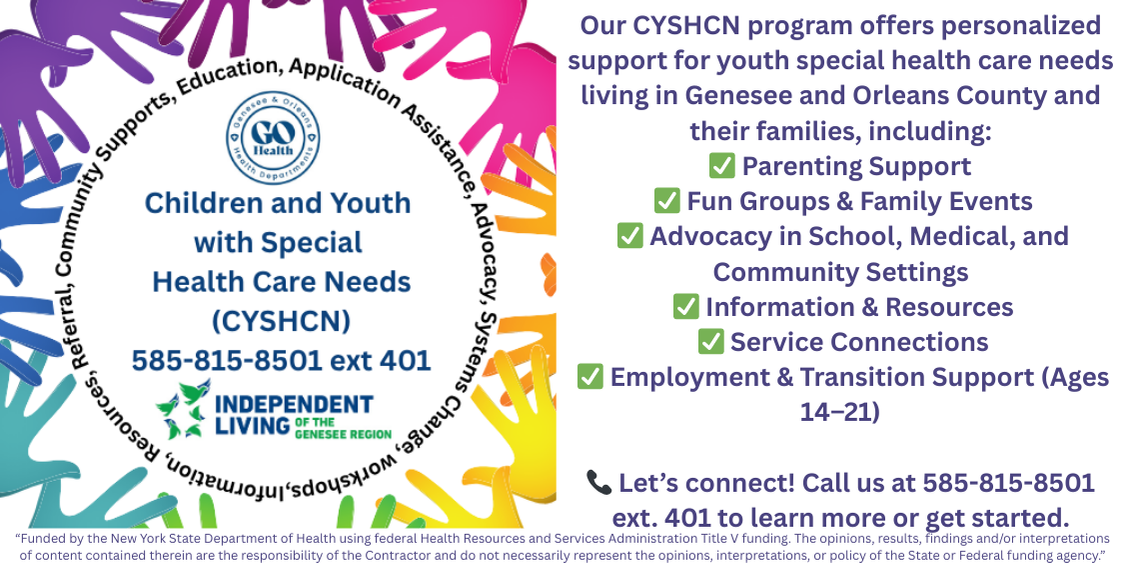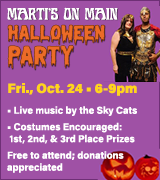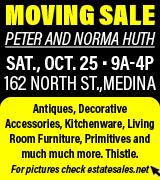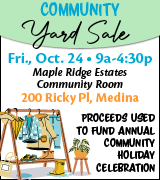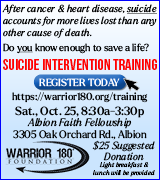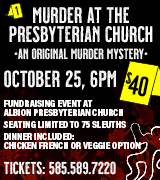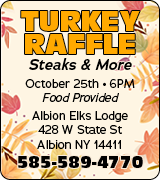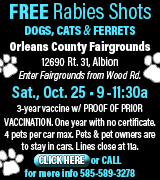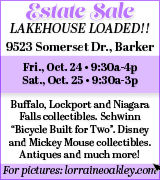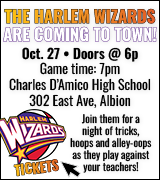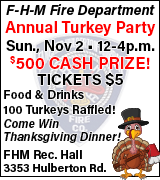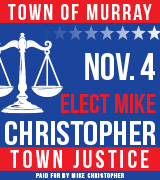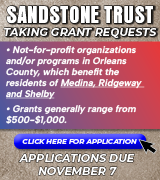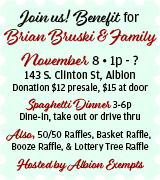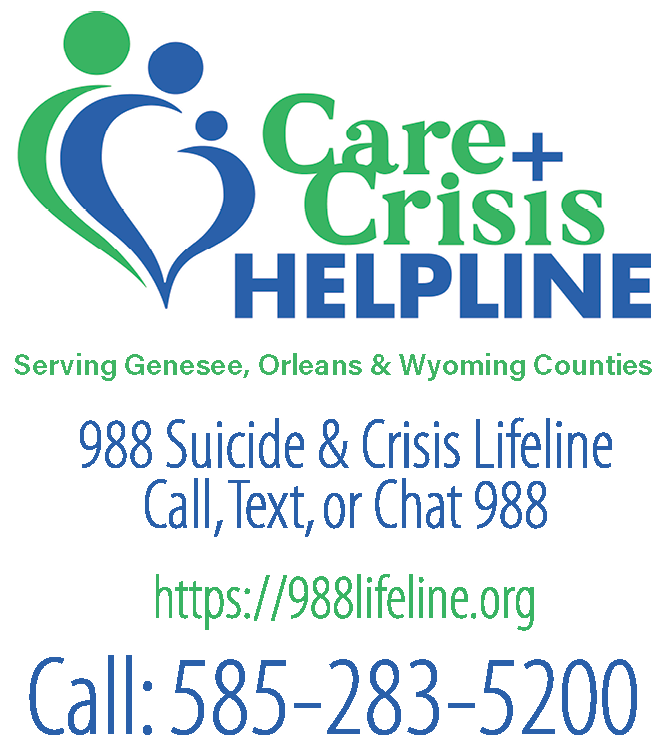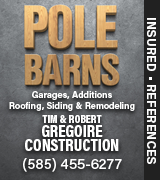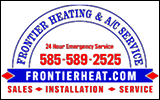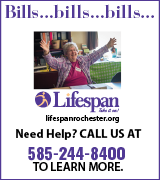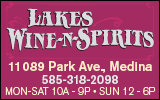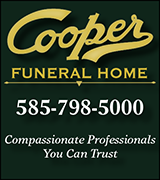NY has tips for dealing with severe winter weather

Photo by Tom Rivers – A tree stands next to Allen’s Bridge Road in Albion on Thursday when temperatures and snow started to fall.
Press Release, Gov. Andrew Cuomo’s Office
Governor Cuomo warned New Yorkers that artic temperatures and severe winter weather are expected to continue through the long weekend. The National Weather Service has issued Wind Chill Warnings for counties across the state as a polar air mass coupled with gusty winds has produced hazardous wind chills well below zero.
Temperatures could plummet as low as 30 degrees below zero, and wind chill temperatures are forecasted to reach -25 degrees to -60 degrees, especially in the Southern Adirondacks. The lower Hudson Valley, New York City, Nassau, and Suffolk Counties will also continue to experience wind chills as low as 30 degrees below zero. The temperature in New York has not been this low since February 2015.
New York has established a cold weather hotline at 1-866-881-2809 to provide New Yorkers with important safety tips during extreme cold weather. Many counties have established warming stations in their communities. For a current list of open warming stations, callers should select option 1 to speak with a NYS representative.
Cuomo reminds New Yorkers to make sure they are prepared by keeping ample emergency supplies in their home and vehicles. If you are heading outdoors, dress in layers and keep your hands and head covered to protect against frostbite. Other safety tips include:
Frostbite
To avoid frostbite, stay inside during severely cold weather. If you must go out, try to cover all parts of your body: ears, nose, toes and fingers, etc. Mittens are better than gloves. Keep your skin dry. Stay out of the wind when possible. Drink plenty of fluids as hydration increases the blood’s volume, which helps prevent frostbite. Avoid caffeine, alcohol and cigarettes. Caffeine constricts blood vessels, preventing warming of your extremities. Alcohol reduces shivering, which helps keep you warm. Cigarette use shuts off the blood flow to your hands.
First Aid – Until You Can Get Indoors
Don’t rub or massage cold body parts.
Put your hands in your armpits.
Drink warm liquids.
Put on extra layers of clothes, blankets, etc.
Remove rings, watches, and anything tight.
First Aid – Once Indoors
Don’t walk on a frostbitten foot. You could cause more damage.
Get in a warm, NOT hot, bath and wrap your face and ears in a moist, warm, NOT hot, towel.
Don’t get near a hot stove or heater or use a heating pad, hot water bottle, or a hair dryer. You may burn yourself before feeling returns.
Frostbitten skin will become red and swollen and feel like it’s on fire. You may develop blisters. Don’t break the blisters. It could cause scarring.
If your skin turns blue or gray, is very swollen, blistered or feels hard and numb even under the surface, go to a hospital immediately.
Hypothermia is caused by prolonged exposure to cold temperatures, especially in children and the elderly. Watch for the following symptoms: inability to concentrate, poor coordination, slurred speech, drowsiness, exhaustion, and/or uncontrollable shivering, following by a sudden lack of shivering. If a person’s body temperature drops below 95 degrees Fahrenheit, get emergency medical assistance immediately. Remove wet clothing, wrap the victim in warm blankets, and give warm, non-alcoholic, non-caffeinated liquids until help arrives.
Frozen Pipes
Prevent pipes from freezing by turning on both hot and cold water faucets slightly, preferably in a basement sink – running water will not freeze as quickly. Open cabinet doors to allow more heat to get to non-insulated pipes under a sink or appliance near an outer wall. If you plan to leave your residence, drain and shut off the water system (except indoor sprinkler systems).
If your pipes burst, make sure you and your family knows how to shut off the water. Stopping water flow minimizes damage to your home. Call a plumber and contact your insurance agent. Never try to thaw a pipe with an open flame or torch. Always be careful of the potential for electric shock in and around standing water.
Fire Safety
Alternate sources of home heating are a major cause of winter residential fires. Make sure all levels of your home have a working smoke alarm and carbon monoxide alarm and check it on a monthly basis.
Always keep a screen around an open flame.
Never use gasoline to start your fireplace.
Never burn charcoal indoors.
Do not close the damper when ashes are hot.
When using alternative heat sources such as a fireplace, woodstove, etc. always make sure you have proper ventilation. Keep curtains, towels and potholders away from hot surfaces.
Have your chimney checked before the season for creosote buildup — and then clean it.
Establish a well-planned escape route with the entire family.
Kerosene Heaters
If you use kerosene heaters to supplement your regular heating fuel, or as an emergency source of heat, follow these safety tips:
Follow the manufacturer’s instructions.
Use only the correct fuel for your unit.
Refuel outdoors ONLY and only when the unit is cool.
Keep the heater at least three feet away from furniture and other flammable objects.
When using the heater, use fire safeguards and ventilate properly.









